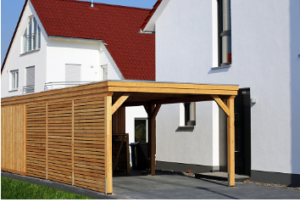Choosing suitable materials is crucial if you’re considering building a carport to protect your vehicle. Listed below are some of the materials used to build a carport. The size of a typical carport is also listed. Also, you’ll find information on the styles available for carports. Read on to learn more about carports and how much they cost. Finally, to get the most value from your carport, choose a strong and durable one.
 Cost of a carport
Cost of a carport
Depending on the size and material you choose, carports Murray Bridge can range from $1,000 to $5,000. The average price of a carport is $4702 (including labour and material costs). Many people install a carport for two reasons: lack of outdoor space and damage to their garage. Both of these reasons are valid, but the size and material of your carport may impact the cost. Therefore, it’s essential to research the cost of a carport before making the purchase.
If you have a prefab structure, your carports Murray Bridge may cost as little as $4,000, depending on the size. However, it may be necessary to apply for a special permit that will add another $100 to $200 to the cost. Special permits for carports are required for 200 square feet or more structures. The cost for obtaining a permit will vary by city, but most cities have requirements for carports.
Materials used to build a carport.
You may want to add a roof to your carport. While you can use a flat or A-frame roof, these structures are susceptible to leaks because of the lack of slope. If you want a more sturdy structure, consider using timber. Timber is available in many sizes and will protect an RV or motorbike, depending on its dimensions. You can also use concrete or gravel to add a floor and further use to your carport.
Timber is an excellent material for the frame of your carport, and you can use timber slats for the roof covering. However, remember to treat timber to avoid rot. Polyethylene, on the other hand, is a common material for carport covering. Polyethylene is a durable, waterproof, low-temperature-resistant plastic weave that is easy to transport. It also weighs very little, making it easy to transport.
Size of a typical carport
A typical carport measures approximately 15 x 15 feet. This size is ideal for a compact or mid-size car and is large enough to cover a riding lawnmower. Its size is also wide enough to cover a typical backyard patio with a picnic table and some lawn chairs. The size of the roof of a carport depends on how many vehicles you plan to park under it. A carport with a 15-foot-wide roof can also cover a standard-size back patio, a picnic table, and small pieces of small equipment.
The width and length of the carport can vary widely. For example, an 18-foot-wide double carport will fit two small or mid-sized cars, but you may consider increasing this width if you plan to store a larger SUV. On the other hand, if you plan to store three or more cars, then a 30-foot-wide carport is more appropriate. You can also extend the length by 5 feet and increase the depth of the carport by 10 feet.
Styles of carports
While the traditional wood-frame or timber-frame carports Murray Bridge is the most common type today, other materials and styles are also considered. Whether you choose a self-bracing or a traditional style, you’ll find it depends on your preferences. However, it’s always better to choose a carport than nothing. Listed below are some examples of styles. Each style has distinct advantages and disadvantages, so decide what style is best for you.
Gable carports feature a gable at each end of the roof, which blends historic elegance and clean aesthetics. They also are more affordable than other styles. Dutch gable carports vary from the gable roof and have a sloping pediment. They are a classic style, but you can add a contemporary look to them with a decorative shingle or even wood shake.
Placement of a carport
Before installing a carport, you should carefully consider the site location. The building or land surrounding your house should be level. You should clear the area of any underground utilities and use string lines to measure the corners. You should also include four posts at the four corners and may need to place another support post halfway down the sides of the building.
The following steps will help you determine the exact placement of your carport. Using a string line to mark the placement of the corner post is an excellent way to avoid costly mistakes made during the installation process.
Udaxoe says:
buy cenforce without a prescription – levitra professional breathe brand viagra pills altogether
May 8, 2024 — 3:12 am